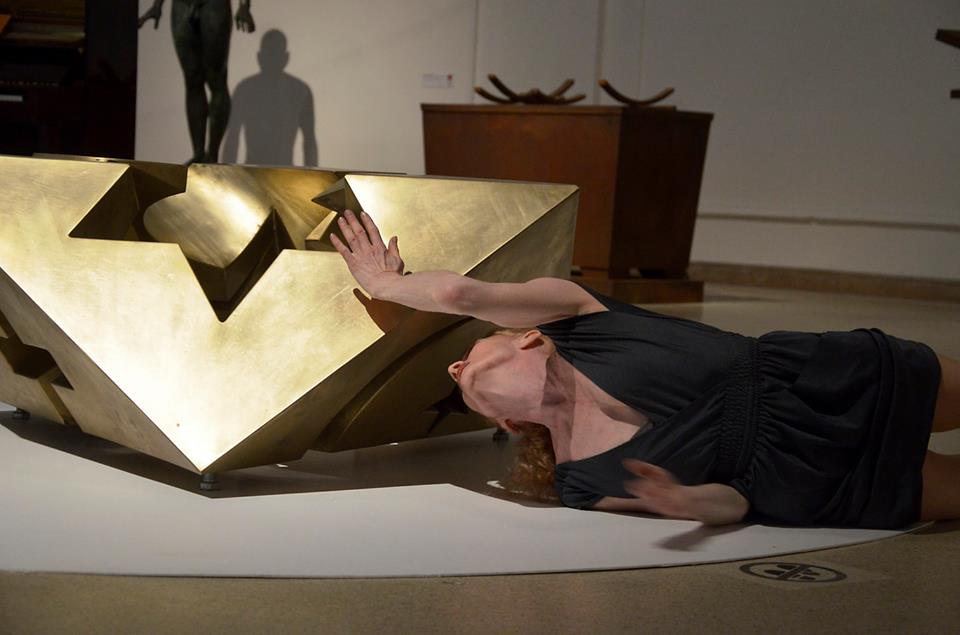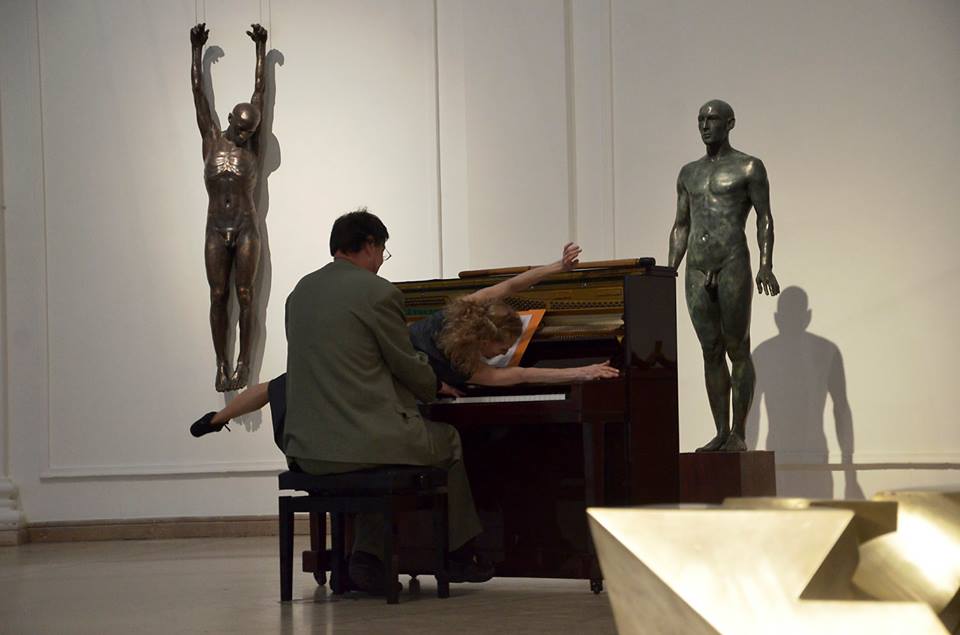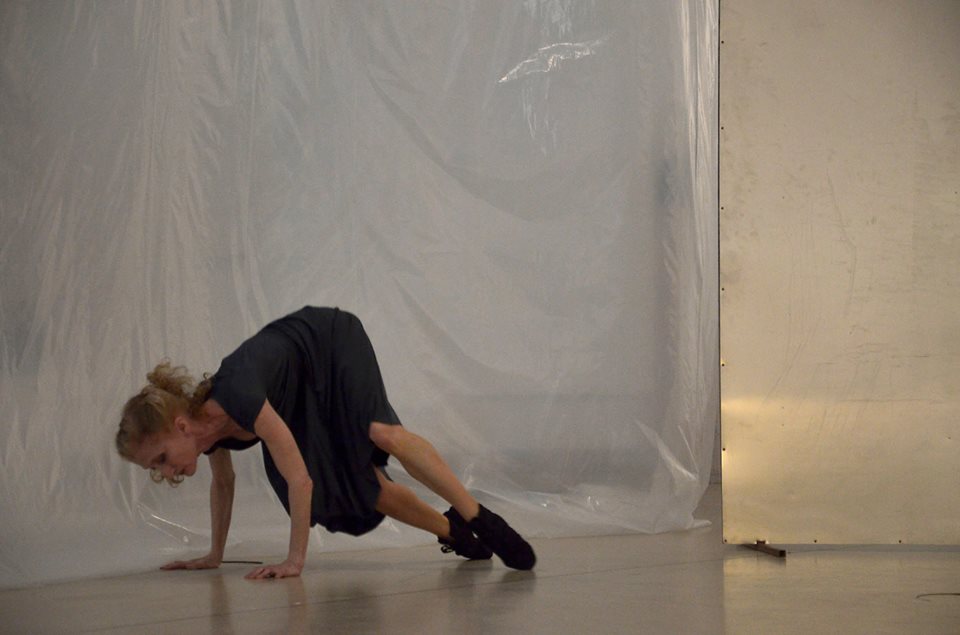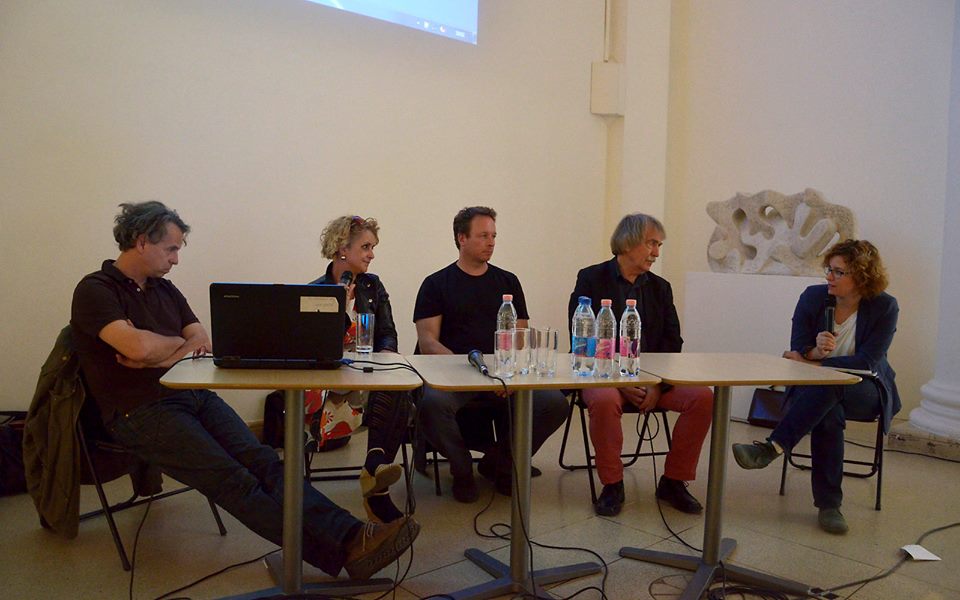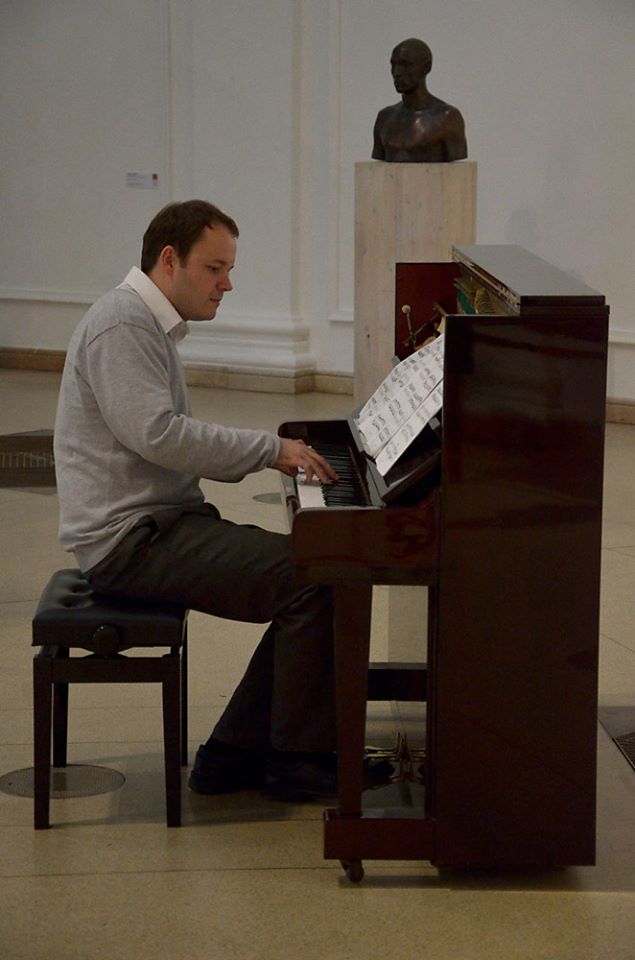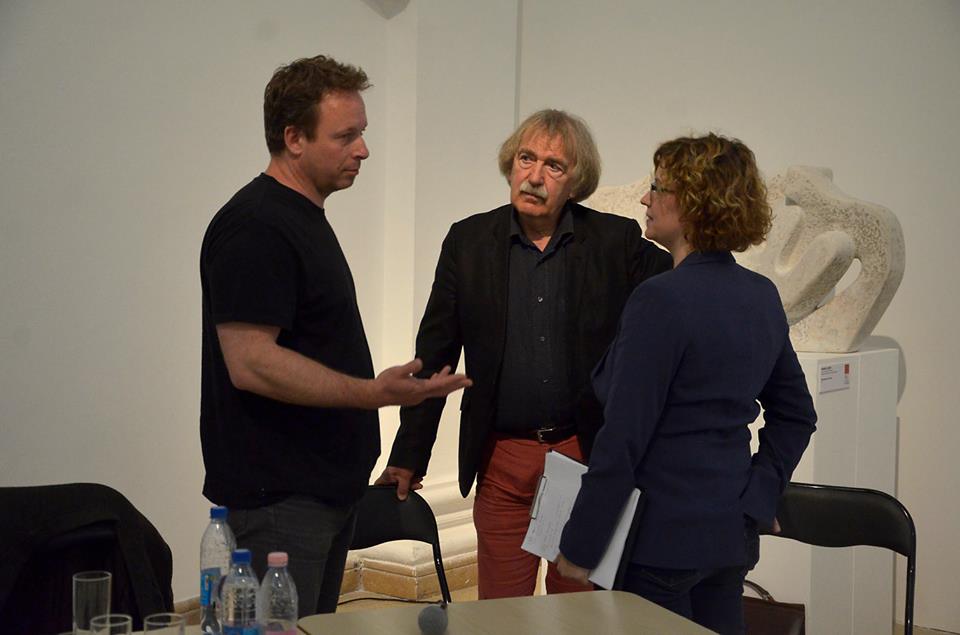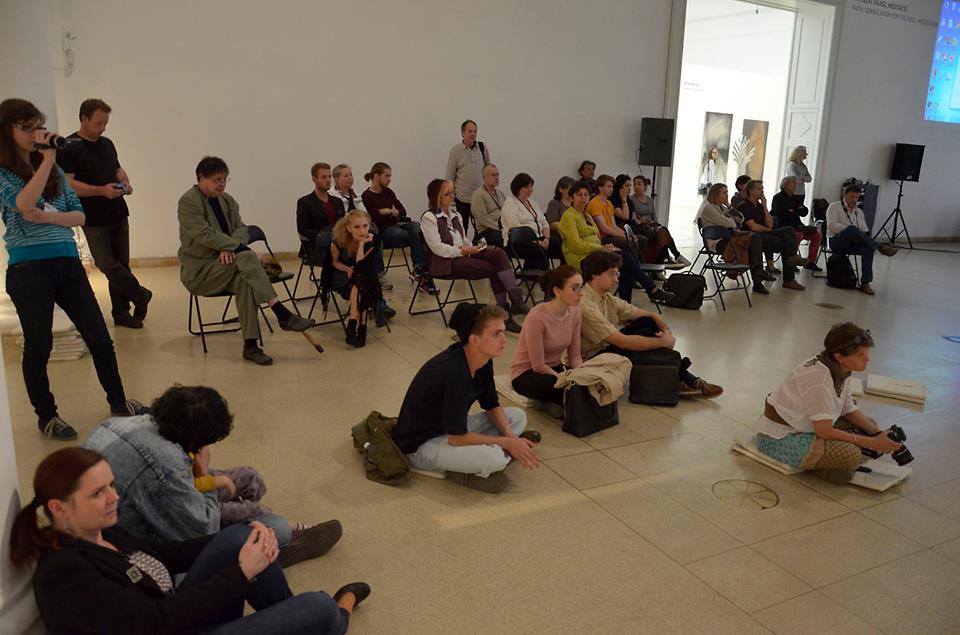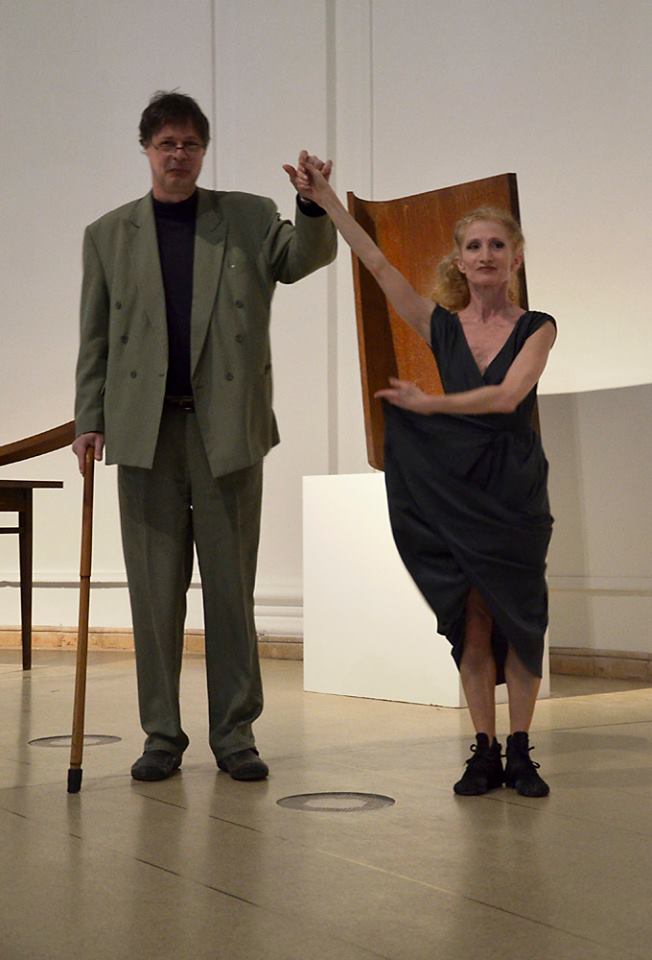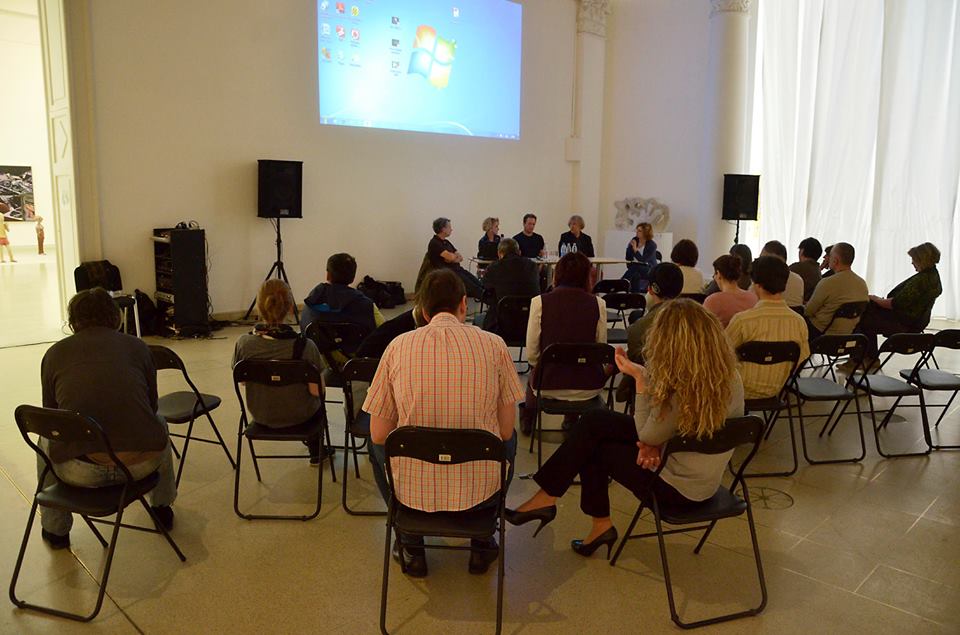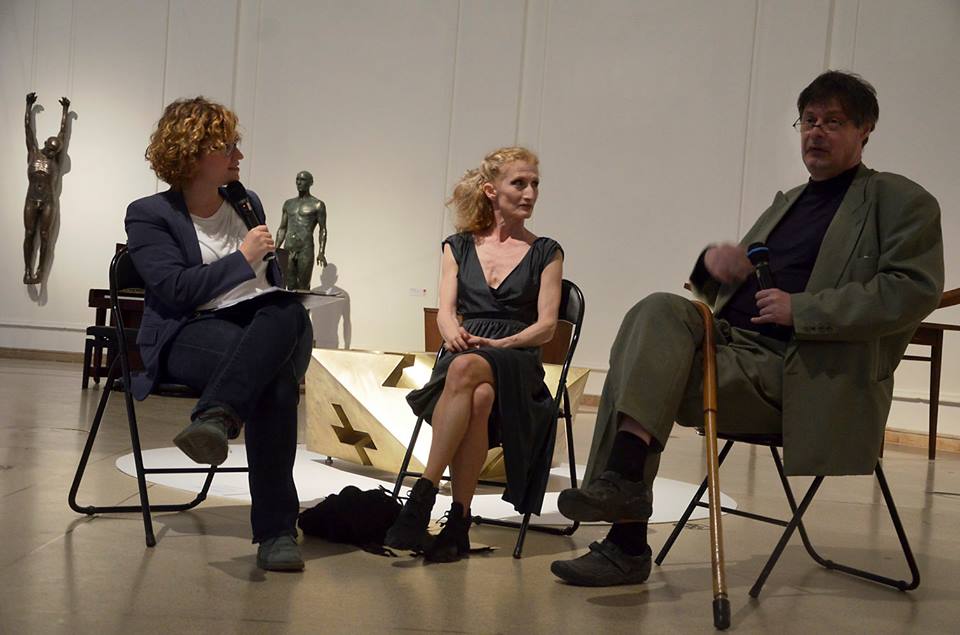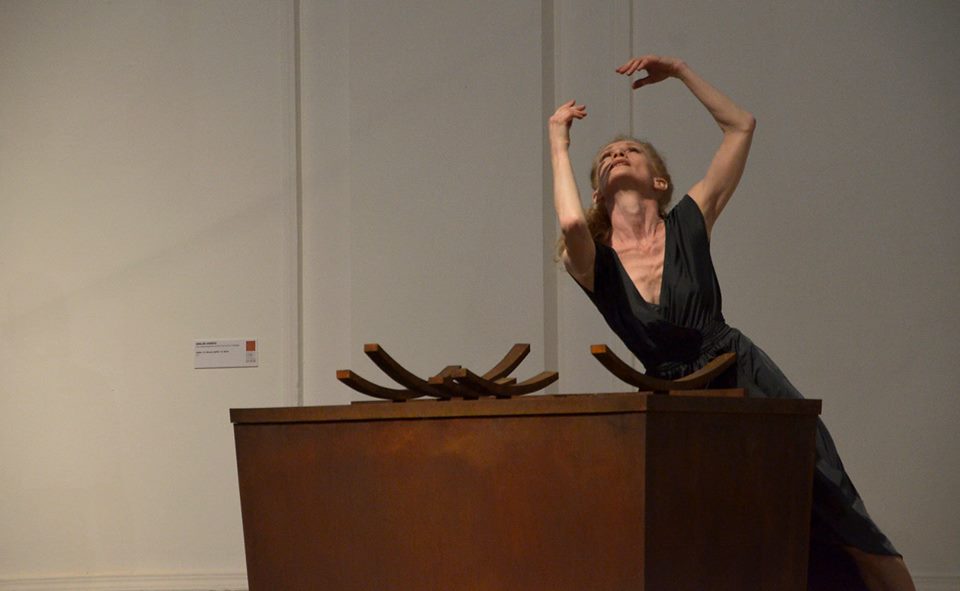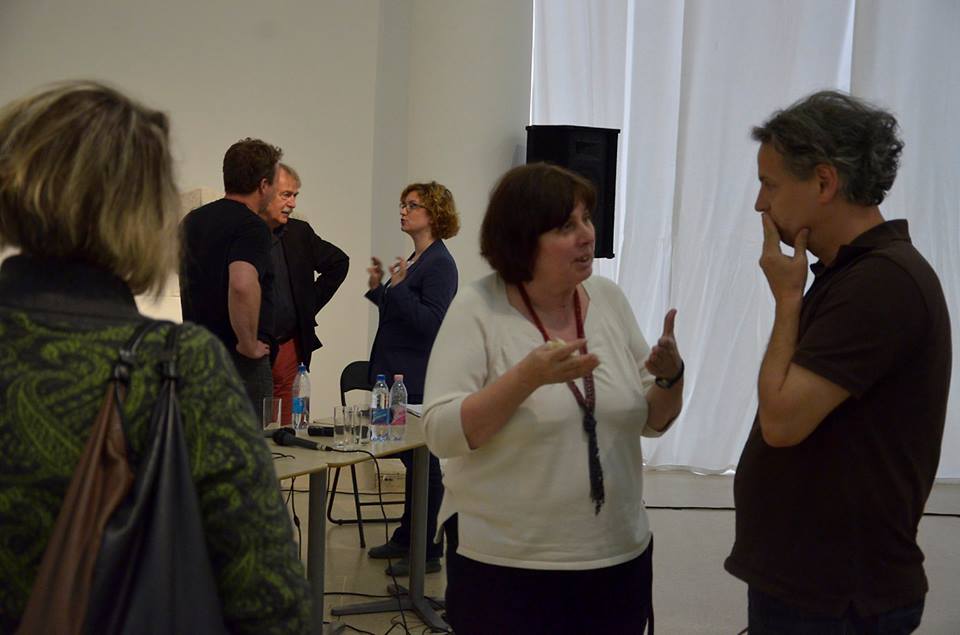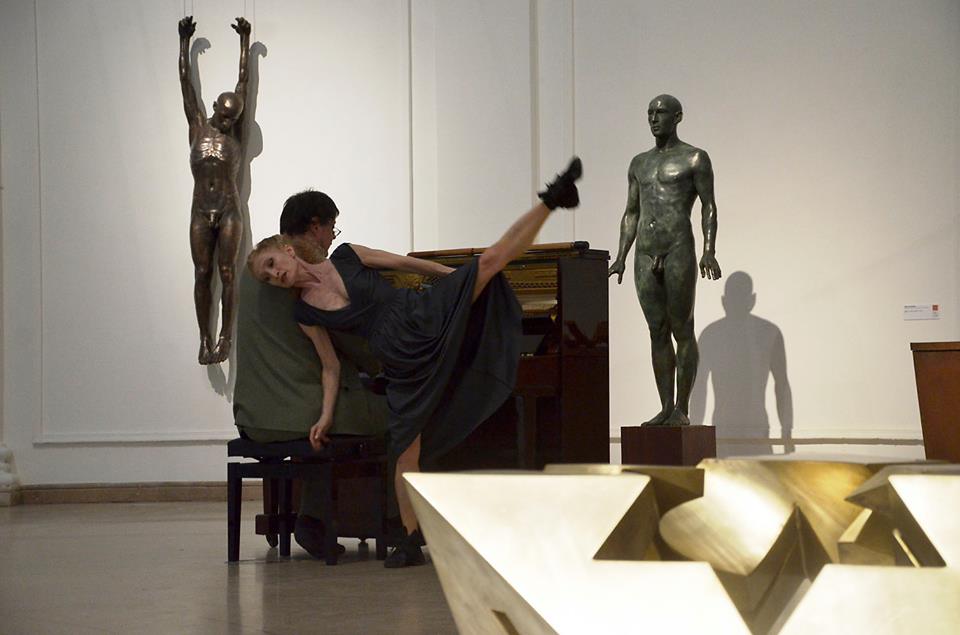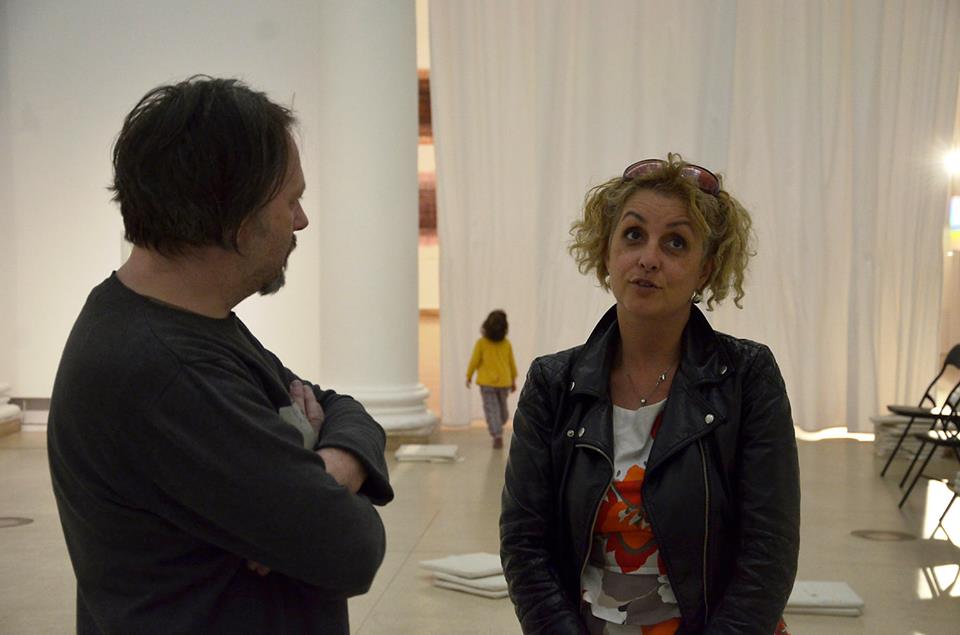5 P.M., FRIDAY, 15 MAY OUR GUEST PÉCS
PARTICIPANTS OF THE ROUND TABLE DISCUSSION GÁBOR MIKLYA, S ÁNDOR PINCZEELYI, PÉTER SOMODY and RITA VARGA , artists
KRISTOF J . WEBER – KATALIN LÕRINC: SCREEN
CONTEMPORARY MUSIC AND DANCE IMPROVISATION
“In the cycle under preparation – of which this work of art is also a part – I examine the problem how a cyclical musical piecemay disappear in a not very well defined space (for instance inmuseumexhibition spaces) or fade to the background, how this musical material, when playing the different parts simultaneously, comes to the foreground in a precisely defined specific space (concert hall) to attract attention. We may add that the same musical material may be used differently so that the factures would not change. Practically it means that if a musician learns and practices a piece he is not only capable of realizing it in one and single way only (in a concert hall) but he may play it as a streetmusician, playing backgroundmusic, ormeditational programmusic at other different spaces not necessarily dedicated for playing music. The cycle is not simply a series of solo pieces, when played simultaneously itmay also turn into a chamber piece. Since I am planning the parallel movement of the parts when the simultaneous sounds are played, the facture of the movement and its representation cannot be missing during the solistic performances. They are composed of traditional accompanying arts with the help of ballet, pantomime and film. The movement factures are not connected to the musical parts to create a composition but they perform the act of reflection by improvisation. They introduce the process whereby a work of art travels from the moment of creative invention to reflective development – hoping that it will never have final forms since the work of art should be under constant change during its life. For the piece makes it possible to reflect over reflection as well.”
KATALIN LÕRINC (Budapest, 1957) dance artist, winner of the Harangozó Prize, dance teacher, critical writer. Finishing school in 1977 as a classic Ballet dancer she set out to Bruxelles to orient herself towardsmodern dance styles. There she learns at Maurice Béjart’s studio, then later she studies the Graham technique in London. During this time she is also a solo dancer for three years at the Swedish Cullberg Ballett, she ismember of the Pécs Ballett Group for another three years and latermember of the TanztheaterWien in Vinenna. Fromthe 1990s she begins to work as a choreographer, a teacher and theoretician – graduating as a journalist in 1997. In 2000 she returns to the stage as an independent artist. As a dance art expert she ismember of the profession’s leading organizations from1993 andmember of dance and theatre advisory boards. Currently she is the adjunct professor of the Hungarian Dance Academy, teacher of the Budapest Contemporary Dance College, and she is the head of theMovement Department at theUniversity of Theatre and FilmArts, Budapest.
KRISTF J . WEBER (Pécs, 1959) composer, musicographer. From 1979 as a self-taught musician he learned music in Budapest outside of any institutional frame, under the supervision of Gyula Csapó (composer). In 1984 he attended a school in Darmstadt. From 1985 he became the assistant of László Vidovszky, considering him as his master. His writings on music were published from 1984. He visited Witold Lutos³awski’s course in Wroc³aw, Poland. He joined the Budapest undergroundmusic for a short while, he was a guestmusician at the A.E.Committe (A.E. Bizottság – amusic group) and he set the industrial meditations (performaces) of Róbert Swierkiewicz (fine artist) and the Xertox group to music. Fromthe 1990 he turned to appliedmusic, he composedmore than a hundredmusic accompaniment to short films and theatre pieces. From2014 he taught computer score editing at the Faculty of Arts, University of Pécs. His compositions were influenced by Erik Satie, John Cage and American minimalism. For the past two decades he has been experimenting with composing double factured (synchronitic) works, where not only two factures are heard at the same time but two different types of (bitonal) tones and rhythm. In his compositions he makes different sound systems confront each other: functional tonality with incidental operations, acoustic instruments with electronic ones, dodecaphony with modal scales. His books published include: Conversations on Music – with László Vidovszky (Jelenkor Publisher, 1997) and Applied Music (Faculty of Arts, Unsiversity of Pécs, 2005).



